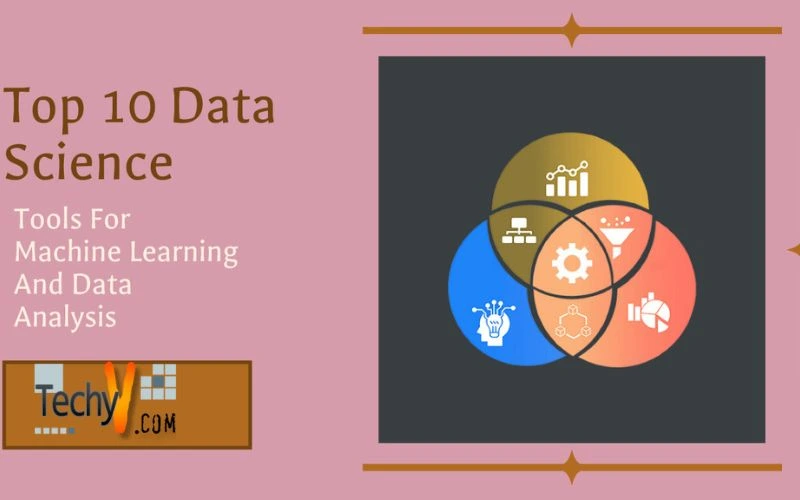Data science is a fast-growing field that uses special tools for analyzing data and training machines to learn. These tools are essential because they help scientists and analysts find information hidden in complex data. Here, we will discuss the top 10 data science tools for machine learning and data analysis. These tools are great because they are easy to use and have powerful features, making them helpful for beginners and experts. So, let’s explore these excellent tools:
1. Python
Python is a popular programming language in data science. It has lots of valuable libraries like NumPy, Pandas, and scikit-learn. These libraries help with tasks like handling data, analyzing it, and training machines. Python is loved because it’s easy to use and can do many different things. That’s why many data scientists and analysts use it as their primary tool.

2. R
R is a popular programming language for analyzing data and making graphs. It has many helpful packages like dplyr, ggplot2, and caret that help with tasks like working with data and making models. Researchers and statisticians prefer R because it can perform many statistical calculations. It’s an excellent tool for exploring and understanding data.

3. TensorFlow
TensorFlow is a particular library made by Google for machine learning. It helps people build and train deep neural networks, powerful tools for solving complex problems. TensorFlow has valuable features like automatic differentiation, which makes training models more manageable, and allows people to use multiple computers to work together. Researchers and AI practitioners highly favor TensorFlow for its simplicity and effectiveness.

4. Scikit-Learn
Scikit-learn is a helpful machine-learning library for Python. It has different algorithms that can learn from data with or without labels. It also has tools to choose the best model, check how well it works, and prepare the data before using it. What’s excellent about scikit-learn is that it’s easy to understand and has clear instructions, perfect for people new to machine learning.

5. Tableau
Tableau is a fantastic tool that helps you show data in a fun and easy way. You can make fancy dashboards and reports that people can interact with. It is simple to explore and share data. With Tableau, you can create beautiful charts and graphs that make it easy to understand information. It’s an excellent tool for telling stories with data and communicating your ideas to others.

6. SQL
SQL is a particular language used to work with databases. It helps people manage and control data in a structured way. With SQL, you can ask database questions, get important information, and do complicated things with data. Learning SQL is essential for data analysts and engineers. It’s a vital skill that you need to have to work with databases and get valuable insights.

7. Apache Spark
Apache Spark is a super strong tool that helps process big data. It’s free to use and has lots of power. Spark can handle lots of data simultaneously and can even do machine learning. That’s why data scientists like using it when they have massive datasets. With Spark, they can process and analyze data quickly and in real time. It’s a unique tool for handling lots of data and getting insights.

8. Jupyter Notebook
Jupyter Notebook is a fun online tool to make and share documents with code, pictures, and explanations. You can use it with different programming languages like Python and R. It’s great because it helps you work in a way that others can understand and repeat what you did. Jupyter Notebook is all about making data science more manageable and more collaborative. It’s a fantastic tool for sharing ideas and working on projects with others.

9. MATLAB
MATLAB is a particular computer program that helps with math, data analysis, and taking pictures. It has many functions and tools that scientists and engineers use to work. MATLAB is popular because it’s easy to use. Researchers and academics really like using MATLAB because it makes their work easier. They can do all sorts of calculations and create cool visualizations with it. It’s an excellent tool for maths and analyzing data in different fields of science and engineering.

10. Apache Hadoop
Apache Hadoop is a unique tool for storing and working with massive datasets. It’s free to use and can handle many different types of data. With Hadoop, data scientists can analyze vast amounts of information quickly and easily. It’s great for working with all kinds of data, whether organized or not. Hadoop is important because it can handle big tasks.


















